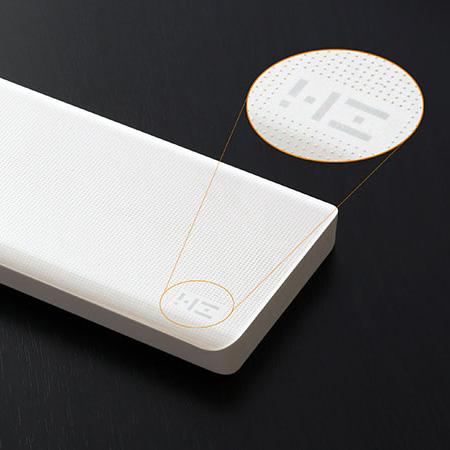Blog más reciente
Marcaje y Grabado Láser sobre Acero: procesos, ventajas y fuentes
Apr 11 , 2022Marcaje y Grabado Láser sobre Acero: procesos, ventajas y fuentes
Marcaje y Grabado Láser sobre Acero: procesos, ventajas y fuentes
El marcado y grabado láser se puede realizar sobre todos los metales: acero, acero inoxidable, hierro, cobre, aluminio, oro, plata, platino, paladio, entre otros. Los procesos que se pueden realizar van desde el grabado profundo hasta el marcado por recocido o el ennegrecimiento superficial.
Dados los muchos tipos de láseres y materiales que existen, elegir el mejor láser para una aplicación de marcado o grabado puede ser un desafío. Comprender las características del láser y las propiedades del material es fundamental para realizar una elección óptima.
Veamos las particularidades del marcado y grabado láser sobre acero.
Procesamiento de acero y láser
El acero es uno de los metales más utilizados en la industria moderna y en particular en el sector médico. Es una aleación de hierro, carbono y cromo en una cantidad de al menos 10,5%.
Este último elemento forma una capa de óxido y de esta forma evita que el metal se oxide. Esta es la razón por la cual el acero inoxidable también se conoce como acero resistente a la corrosión.

láser ultravioleta | láser verde | Láseres ultravioleta | láser uv dpss | láser de nanosegundos | fuente de láser ultravioleta | Láseres de estado sólido
La presencia de cromo aumenta la dureza y el límite de elasticidad de la aleación y cuando su porcentaje supera el 12% se denomina acero inoxidable por su resistencia a los agentes químicos.
As well as other metals, marking or engraving operations can also be carried out on steel using different types of laser sources:
CO2,
Fiber,
Nd:YAG solid state.
Laser Engraving Steel Panel SetLaser engraving on stainless steel using fiber laserCreating a mark on the surface of the steel is very simple using the fiber optic laser. The material reacts very well to the infrared wavelength (1030-1080 nm), with simplicity it triggers surface reactions that produce contrasting and sharp signs.
This process produces a permanent, direct mark on the surface of the metal and the laser machine settings can be changed at will to produce a wide variety of stainless steel finishes that include permanent light, halftone or dark marks and a variety of colors. .
This technology is used intensively in industry and especially in sectors such as automotive, medical, aerospace where product traceability is of particular importance. These lighter marking options can be used to improve productivity.
Laser Engraving on Steel with Fiber Laser - metal business card
Laser Annealing for Medical Instruments
A very common application of the laser is the annealing of medical components in stainless steel and titanium such as implants and instruments.
In this case it is important to have a highly concentrated peak energy with a slightly longer pulse duration to attract the carbon to the surface and obtain a sharp dark mark that resists the requirements of the various tests to which the instrument is subjected such as passivation. and the autoclave cycles.
Whether using a CO2 laser or a fiber laser, the energy of the laser beam causes the oxide to blacken, creating a sharper and darker mark in the case of fiber laser marking because stainless steel absorbs the wavelength of this type of laser.
In addition, depending on the temperature, different colors can be obtained on the surface of the steel through the blackening or annealing process, which allows you to create different designs.
Another way of obtaining permanent black markings on steel is by exploiting ultra-fast USP sources at the picosecond. These vary the surface of the material by creating diffractive traps for the light and thus creating high contrasts in the marking.
The so-called annealing marking process is ideal for marking medical instruments due to the great resistance over time of this operation and the fact that in this way bacterial proliferation on the instruments is avoided.
Medical instruments for surger
Laser marking on stainless steel using CO2 laser
Metal marking compounds are specific laser marking products that contain ceramic particles and are thermally activated on a chemical basis.
In some cases of laser marking, therefore, these compounds are applied to the surface of the steel and left to dry. When the laser beam heats this compound, the ceramic particles fuse to the surface of the metal, creating a black mark with a very high contrast.
This sign is almost permanent: it cannot be removed without excessive friction and force, which when applied usually damage the underlying steel. This option can be used for general marking on stainless steel including images and bar codes.
Laser engraving on steel
Laser Engraving on Stainless Steel using Nd: YAG Laser
Compounds that are sometimes used to blacken a stainless steel surface when marking with a CO2 laser are not needed when using a Nd: YAG laser.
It is possible to obtain different effects with a Nd: YAG marking laser on most metals by optimizing: laser power, speed, pulse frequency and focus.
Stainless steel, however, allows for greater variation in the visual effect than most metals. Titanium is the only other metal that comes close to it in this sense.
In general, stainless steel can be marked in black, different shades of gray, gold, white and with a shiny mark where the surface appears smoother than the surrounding area and therefore reflects light in a different way. These surface marks are almost devoid of depth.
Discover all our solutions for laser marking and engraving